York Minster is located in the very heart of York town centre, and is considered one of the most iconic landmarks in the country.
It is a popular tourist attraction and a significant part of the city’s history. The Minster’s age is a topic of interest to many, and people often wonder how old it really is.
Stood outside the side entrance you can see just how old the site is when you take a look at some of the Roman stones found in the grounds whilst building the Minster.
The York Minster Cathedral is more than 800 years old. It stands as an enduring testament to England’s cultural heritage, having played an integral role in the nation’s history and bearing witness to pivotal events across more than eight centuries.
The construction of York Minster began in 1220 and took over 250 years to complete, with the final touches being made in 1472.
The building is a masterpiece of Gothic architecture and is the largest cathedral of its kind in Northern Europe.
It has undergone several renovations and restorations over the years, ensuring that its grandeur and beauty remain intact.
The history of York Minster dates back to the 7th century, when a small wooden church was built on the site.
Over the centuries, the church was rebuilt and expanded several times until it became the grand cathedral that we see today.
The Minster has played an important role in the religious and cultural life of York, and its age is a testament to the city’s rich history.
Historical Timeline of York Minster
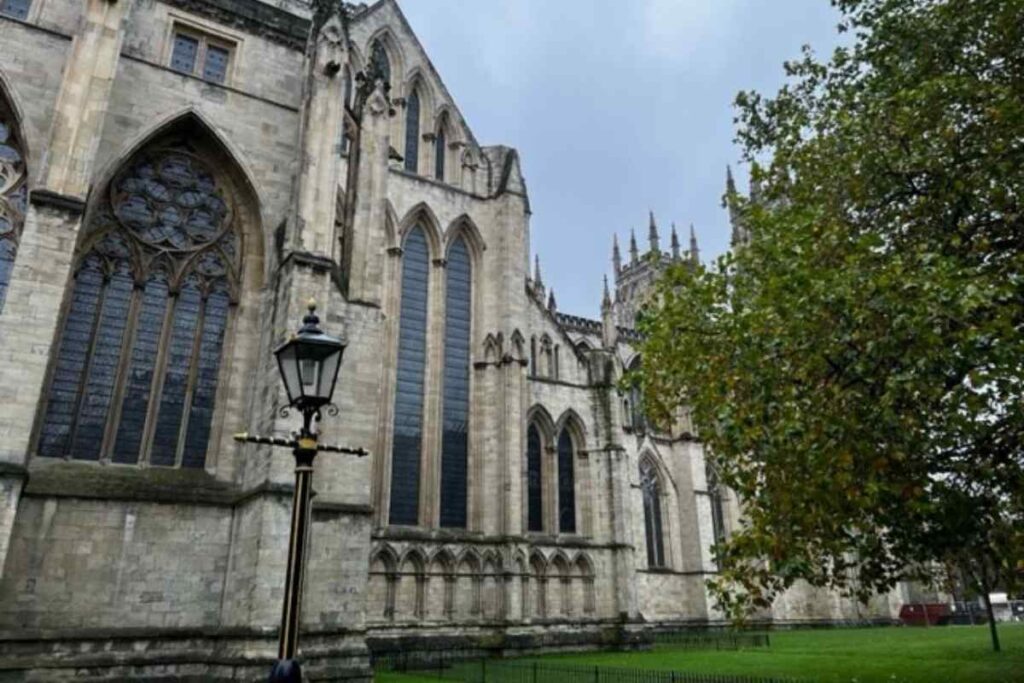
York Minster is one of the largest and most impressive cathedrals in Northern Europe.
The Minster has a rich history that spans over a thousand years.
Here is a brief historical timeline of York Minster:
York Minster has survived fires, wars, and lightning strikes throughout its long history.
The Minster remains an important symbol of the city of York and a testament to the skill and dedication of its builders and restorers.
My favorite thing to do is look around the main entrance at the stone carvings and spot some of the very weird and often rude carvings. They do make me laugh because they are carved on a religious building.
Architectural Highlights
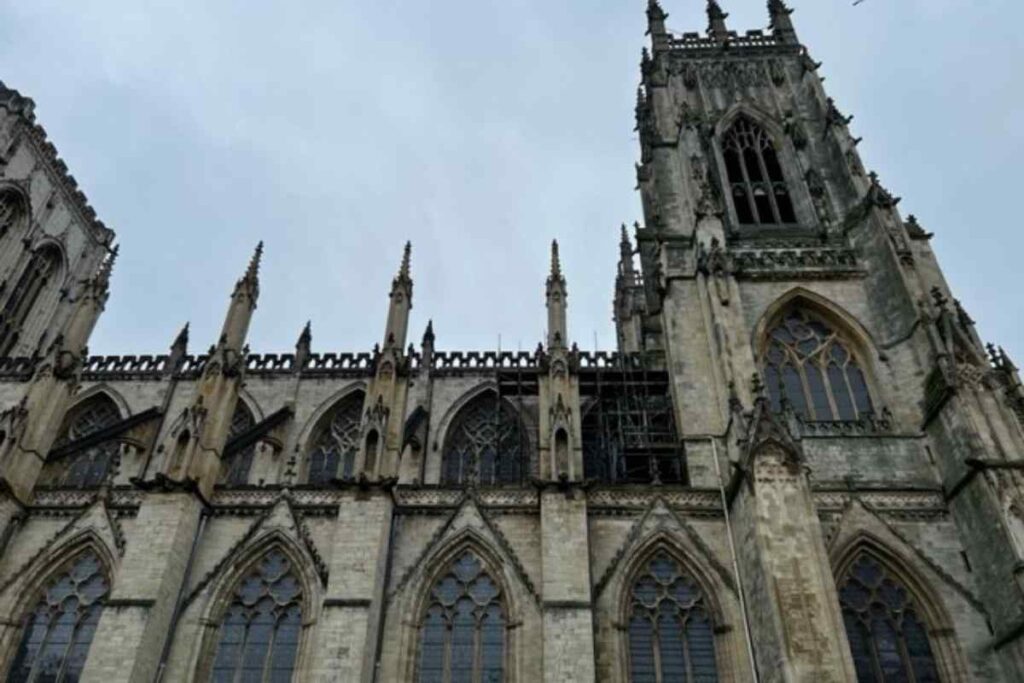
York Minster is a stunning example of Gothic architecture, with many unique features that make it stand out from other cathedrals.
Here are some of the most notable architectural highlights of York Minster:
Central Tower
The central tower of York Minster is one of its most striking features.
At over 235 feet tall, it is the highest point in York and can be seen from miles around. The tower was completed in the 15th century and is decorated with intricate carvings and statues.
Don’t Miss
- My Experience at York Minster’s Phoenix Light Show
Stained Glass Windows
York Minster is home to some of the finest stained glass windows in the world.
Within the cathedral, there are more than 128 stained glass windows, with their histories reaching as far back as the 12th century.
The Great East Window, a true masterpiece of Gothic art, proudly claims its title as the largest expanse of medieval stained glass worldwide.
Chapter House
York Minster’s chapter house, a distinctive octagonal structure constructed in the 13th century, captivates with its ornate carvings and a breathtaking vaulted ceiling.
Once a gathering place for the clergy, this exquisite space is now accessible to the public.
West Front
Impressively gracing the west front of York Minster are two grand towers and a colossal rose window.
Erected in the 15th century, these towers are adorned with intricate carvings featuring saints and angels. The rose window comprises a stunning arrangement of 100 individual glass panes, spanning over 26 feet in diameter.
York Minster, in its entirety, stands as an authentic masterpiece of Gothic architecture, making it an essential destination for history and art enthusiasts.
Significant Events
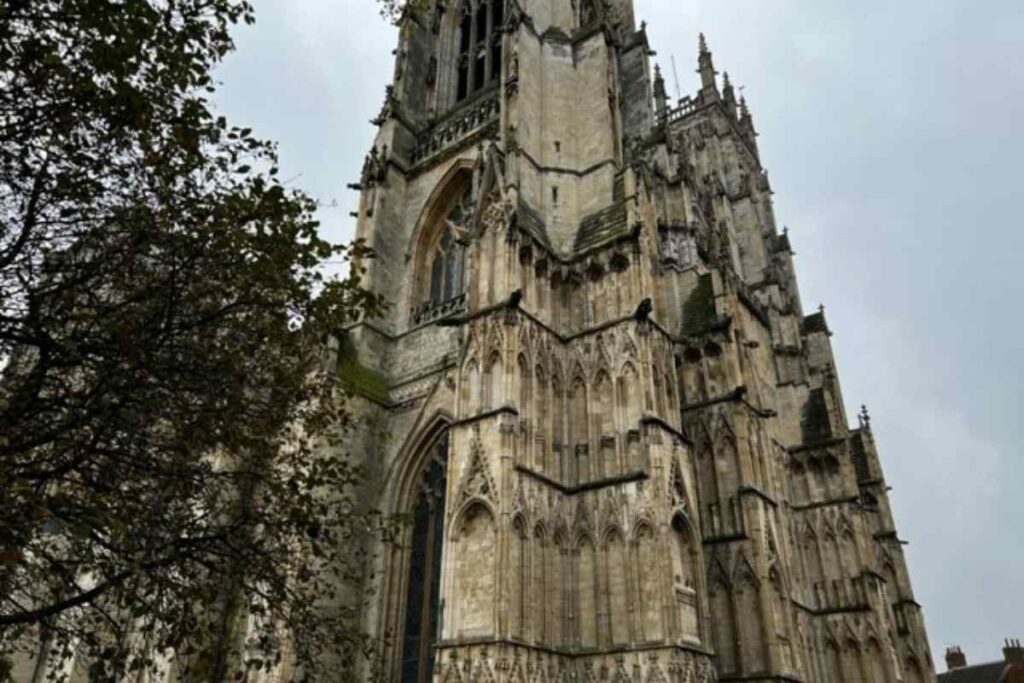
York Minster has a rich history dating back to the Roman era.
Here are some significant events in the history of York Minster:
- In 314 AD, a bishop of York was summoned to the Council of Arles, indicating the presence of a Christian community in York at that time. However, archaeological evidence of Christianity in Roman York is limited.
- In the 7th century, a wooden church was built on the site of the current York Minster.
- In the 8th century, the church was rebuilt in stone by Archbishop Ecgbert.
- In 1069, the church was destroyed by fire during the Harrying of the North by William the Conqueror.
- In 1080, the church was rebuilt in a Norman style by Archbishop Thomas of Bayeux.
- In the 13th century, the church was rebuilt in a Gothic style, with the nave and transepts being completed by 1230.
- In 1472, the central tower collapsed, destroying the choir and transepts.
- In the 15th and 16th centuries, the church was rebuilt and expanded, with the addition of the Lady Chapel and the Great West Window.
- In 1829, a fire destroyed the roof of the nave.
- In 1967, a fire destroyed the roof of the south transept.
- In 1984, a bomb planted by the Provisional IRA exploded in the church, causing significant damage.
- In 2018, the Minster’s grand organ underwent extensive restoration work over the next two years.
Despite these setbacks, York Minster remains a magnificent example of Gothic architecture and an important landmark in the city of York.
Notable Figures
York Minster has been a significant part of English history for over a thousand years.
As a result, it has hosted many notable figures throughout its history.
Here are just a few of them:
- Emperor Constantine: In 306 AD, Emperor Constantine was proclaimed Emperor of the Western Roman Empire by his troops in York (then Eboracum). A statue of him still stands outside the front entrance of York Minster.
- William the Conqueror: In 1069, William the Conqueror visited York and ordered the construction of a castle to secure his hold on the city. This castle was built next to York Minster and was later used as a prison.
- King Henry VIII: During the English Reformation, King Henry VIII dissolved the monasteries and took control of York Minster. However, the cathedral was later restored to the Church of England.
- Queen Elizabeth II: In 1988, Queen Elizabeth II visited York Minster to celebrate its 800th anniversary. She also attended a service at the cathedral during her Diamond Jubilee tour in 2012.
These are just a few of the many notable figures who have visited York Minster over the centuries.
The cathedral continues to be an important part of English history and culture, attracting visitors from all over the world.
Restoration Efforts
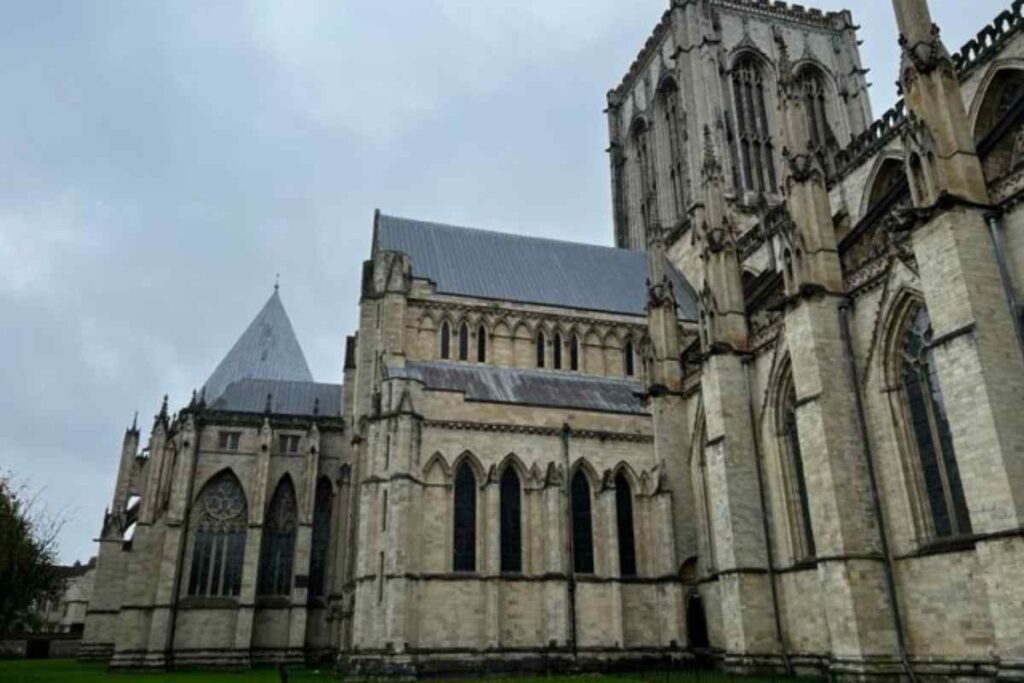
York Minster has undergone several restoration efforts throughout its history.
From 1730 to 1736, the entire floor of the minster was relaid in patterned marble, and from 1802, a major restoration took place.
However, on February 2, 1829, an accidental fire destroyed the roof and caused extensive damage to the building.
In response, a major restoration project was undertaken, which lasted for over 20 years. The project included the rebuilding of the roof and the addition of new features such as the Rose Window.
More recently, the Great East Window underwent a 12-year restoration and conservation project, which was one of the largest of its kind in Europe. The 600-year-old window was carefully dismantled, and each of its 311 individual panels was cleaned, conserved, and reassembled using new leadwork.
York Minster also has a rolling program of restoration work to maintain the cathedral’s vast architecture.
To sustain the program, an annual funding of £2.5 million is necessary. This funding encompasses essential work on the stonework, roof, and stained glass.
The cathedral’s centuries of expert craftsmanship have contributed to its longevity and beauty.
Restoration efforts have been ongoing for many years, and they have helped to preserve this magnificent building for generations to come.
Cultural Significance
York Minster is not only a religious site but also a cultural icon of England.
It has played a significant role in the country’s history and has been a witness to many important events. The cathedral is over 800 years old and has seen the rise and fall of empires, wars, and plagues.
An emblem of the city of York, the Minster draws visitors from every corner of the globe.
This architectural masterpiece of Gothic design ranks among the largest cathedrals in Northern Europe. The cathedral’s intricate design and breathtaking stained-glass windows stand as a testament to the unparalleled skill and craftsmanship of the medieval architects and artisans who brought it to life.
Over the centuries, York Minster has been a place of pilgrimage, a site of royal coronations, and a center of learning.
It has also been a refuge for those seeking shelter during times of war and disaster. The cathedral has witnessed many historic events, including the signing of the Treaty of York in 1237, which brought an end to the conflict between England and Scotland.
Today, York Minster continues to be an important cultural and religious site. It hosts regular services and concerts and is a popular venue for weddings and other ceremonies. The Minster also houses a museum that showcases the cathedral’s rich history and heritage.
Present Day Status
York Minster is one of the largest Gothic cathedrals in Europe and has been standing for over 800 years. Today, it remains an active place of worship and a popular tourist attraction.
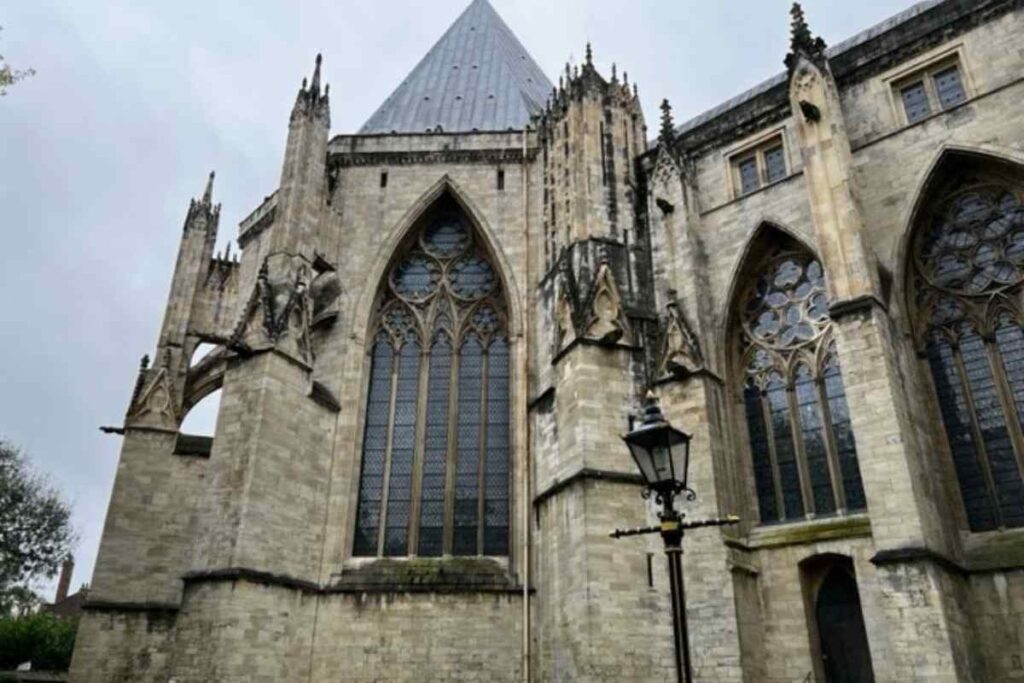
From 2015 to 2018, the Minster embarked on a significant restoration project, prominently featuring the restoration of the Great East Window, recognized as the world’s largest expanse of medieval stained glass.
This comprehensive endeavor also encompassed stonework cleaning, roof repair, and enhancements to the heating and lighting systems.
Visitors can explore the Minster’s many chapels, including:
- the Lady Chapel, which features beautiful stained glass windows
- and the Chapter House, which houses an impressive collection of medieval artifacts.
The Minster also offers guided tours, which provide visitors with a more in-depth look at the history and architecture of the building. You can obtain tickets on the official website or arrange guided tours through Get Your Guide.
Despite its age, the Minster continues to play an important role in the community. It hosts regular services and events, including concerts, exhibitions, and lectures.
The Minster also supports a number of charitable organizations and initiatives, including the York Minster Fund, which helps to preserve and maintain the building for future generations.
Conclusion and final thoughts
York Minster is a magnificent cathedral that has stood the test of time. It was built over a period of 250 years, from 1220 to 1472, making it over 800 years old.
The cathedral is the largest completed during the Gothic period of architecture, and it is a testament to the skill and craftsmanship of the people who built it.
Throughout its history, York Minster has played an important role in the Church in the North of England.
It has been the site of many important events, including the coronation of King George VI and Queen Elizabeth in 1937. It has also been a place of worship and pilgrimage for many people over the centuries.
Despite its age, York Minster is still in use today and is open to visitors. It is a popular tourist destination, attracting visitors from all over the world who come to see its beautiful architecture and learn about its history. The cathedral is also an important part of the local community, hosting events and services throughout the year.

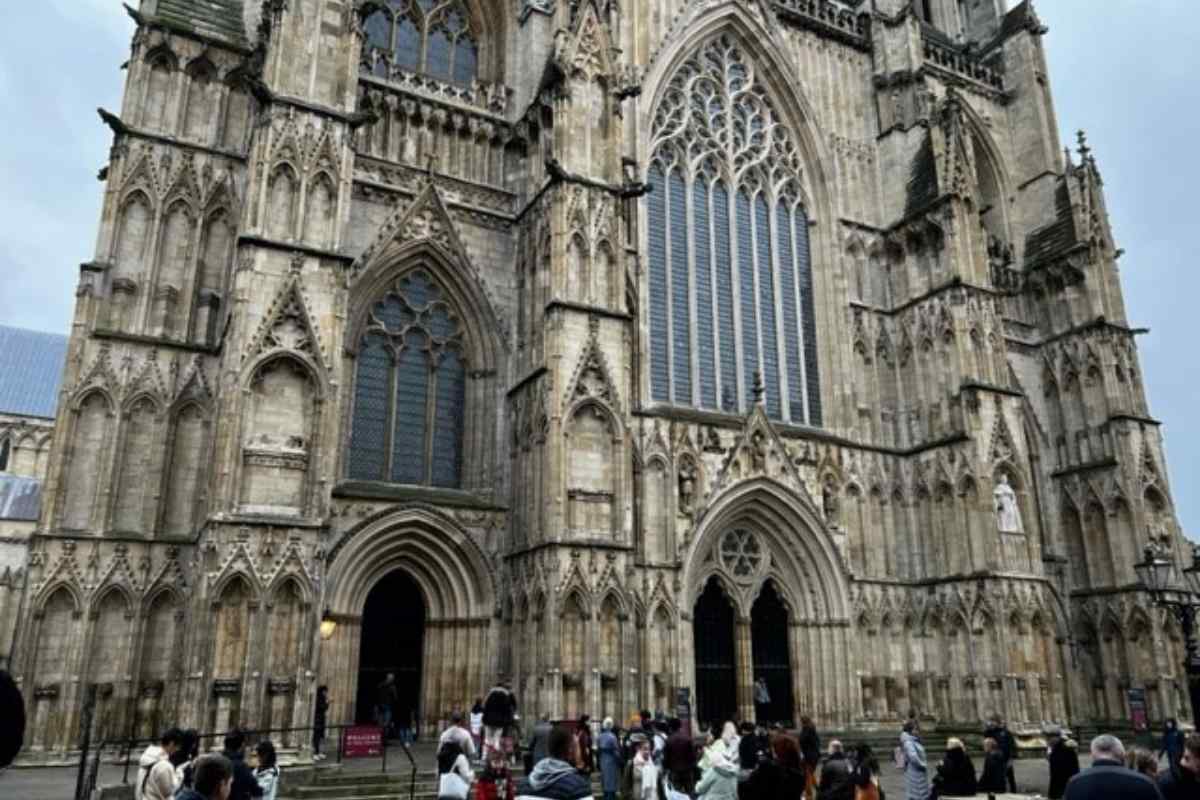


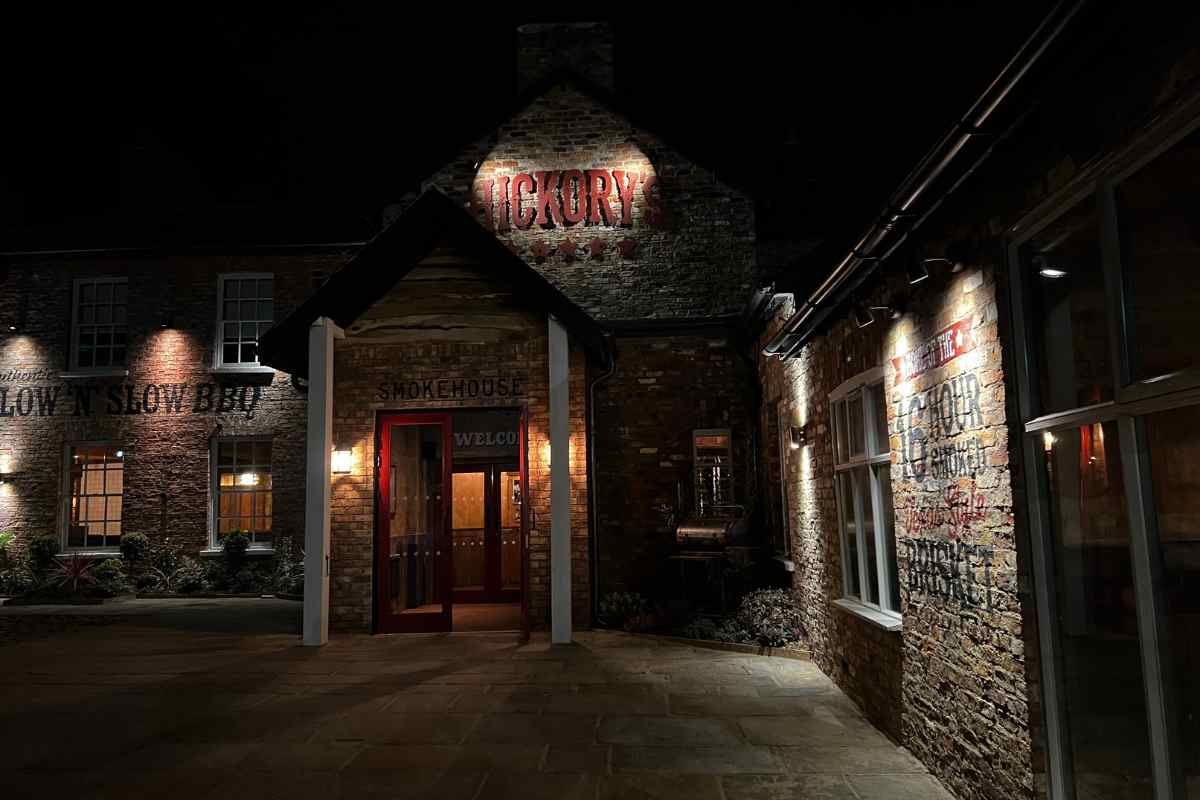
Leave a Reply